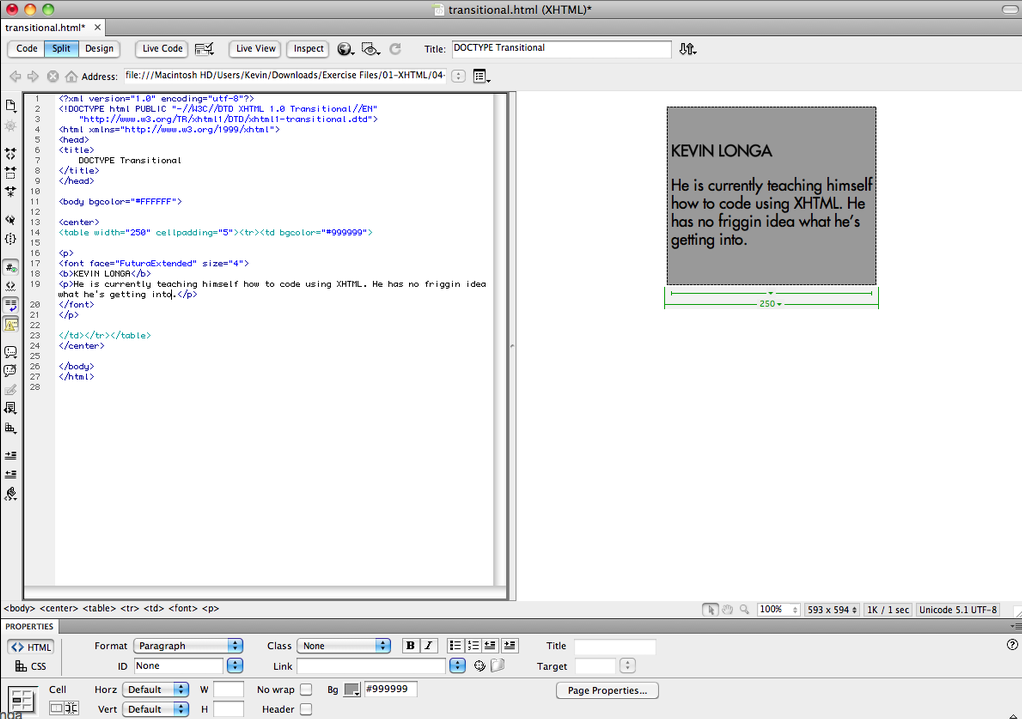You’ve heard the terms a bunch of times, and maybe you think that only engineer wizards know what to do with them, but you can approach HTML and CSS with little fear if you just know what they do and how they can help you build a simple website like the one you see here.
If you’re a beginning web designer, all of the new technology and terminology of web development can often overwhelm you. Knowing what to do and where to start learning can confuse you enough to quit before even starting. Believe me, I know. You can grow pretty frustrated trying to make sense of it all.
Today, my friends, I want to take a moment to help you understand the basic two languages that will help you build simple websites like kevinlonga.com. I want to introduce you to HTML and CSS.
If you want to display content on the Internet, then you can program and write special languages into a document in order to get that content onto the web. Those special languages are HTML and CSS. You can think of them as your friendly foreign language interpreter. Say that you speak a fictional language; let’s call it Yassi (just for the hell of it). In Yassi you can speak in text, video, audio, interactive media, etc. and now you want to speak Yassi to the rest of the world through the Internet. Well, all you have to do is write your Yassi language into HTML and CSS code and Eureka! billions of people can now see and interact with your Yassi language on the Internet.
Now, you must understand that HTML and CSS are like the dynamic duo; they work together to give you the right content and look to your website. And when I say “right content and look,” I’m referring to HTML and CSS, respectively. Yep, think of HTML as the code that will put up the content of your Yassi language—it’s the “words” of your speech. When you want to communicate through plain, old text, video, audio, whatever, then you’re going to communicate through HTML. Then think of CSS as the style of your Yassi language—it’s the tone, the pitch, the bravado, the way you speak. CSS brings the style to your webpage. In fact, there’s a clear reason why CSS stands for Cascading Style Sheets. Without HTML your website would not have content, and without CSS your website would not have the look and feel you seek.
You can think of HTML as what controls the structure and content of the web.
And you can think of CSS as what controls the presentation of the web.
Typically, beginning web designers learn how to use HTML first with some CSS along the way, and then eventually go on to understand CSS’s more advanced concepts later. Of course, just like reaching the top of a mountain, there’s more than one way to master HTML and CSS.
Now that you have a rough idea of what HTML and CSS are and what they can do, it’s time to start getting your hands dirty, young grasshopper. Below I’ve posted three wonderfully useful places to start learning HTML and CSS. Happy coding, my friends.
Great Resources for learning the nitty gritty of HTML & CSS:
W3Schools.com – It’s free. It’s straightforward. ‘Nuff said.
Lynda.com – Although you have to pay to use this site (which, I know can be pain in the wallet for my fellow bootstrapping entrepreneurs), the instructional videos on this site offer the best quality content you can buy. When it comes to cultivating solid, foundational knowledge of HTML & CSS, Lynda.com provides the best.
Mozilla Thimble – A great place where you can test out your HTML & CSS skills right in your browser, and it’s powered by your friendly neighbors from Mozilla Firefox (the illest browser before Chrome rolled onto the scene with it’s hot green, red, yellow and blue rims).
Until next time, keep learning, my friends.

One Trackback
[…] the HTML code used to make the holiday card pictured on this post. As I described in my post “Website Development: HTML & CSS,” HTML controls the structure and content of what you find on the web. So, the code below […]